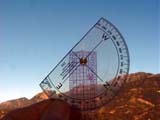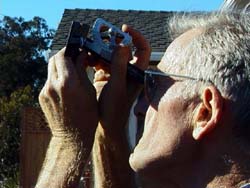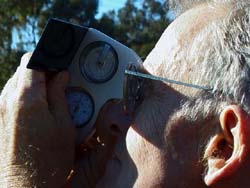 Abney Level |
 Suunto Tandum |
 Small Homemade Clinometer |
 Abney Level |
 Suunto Tandum |
 Small Homemade Clinometer |
 Measuring Sun Elevation with Abney Level and Welders Filter |
 With Suunto Tandum and Filter |